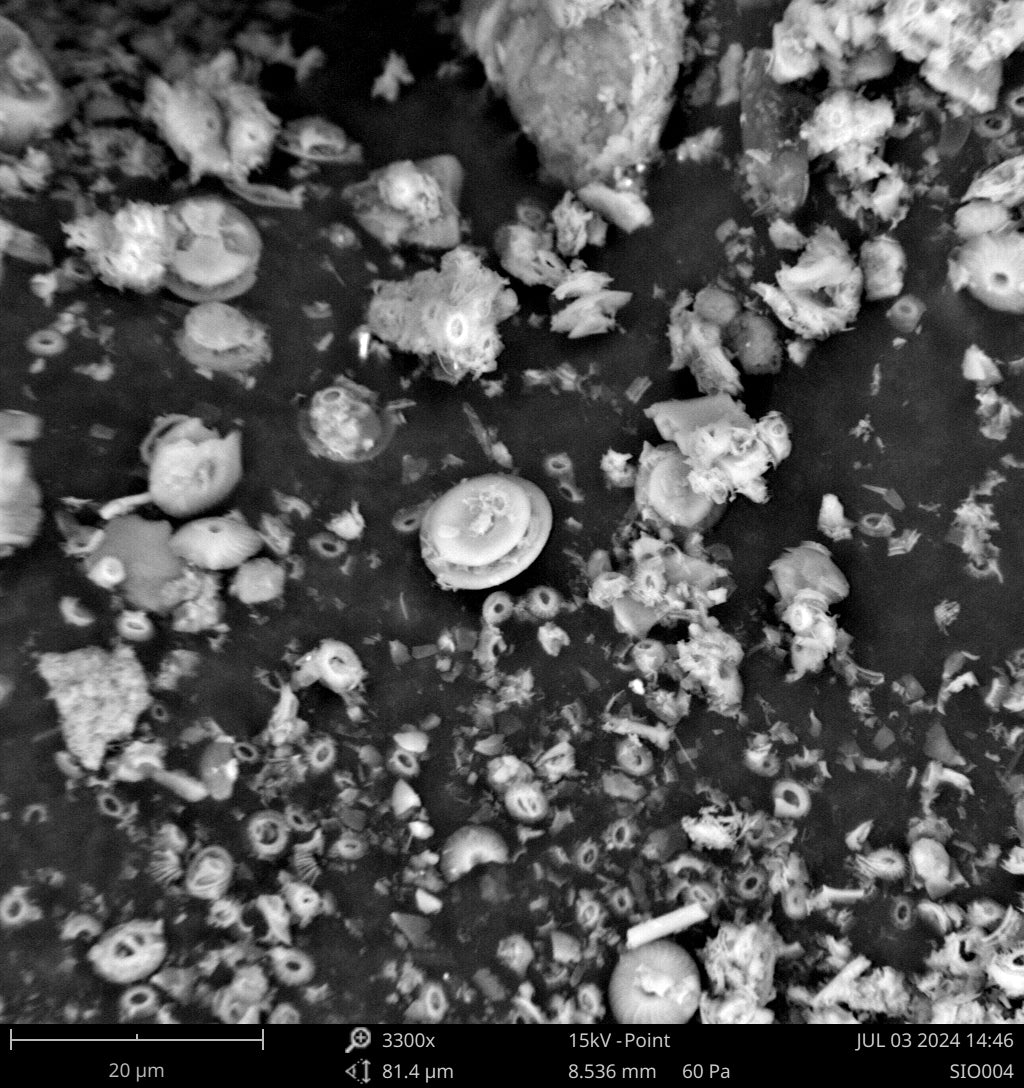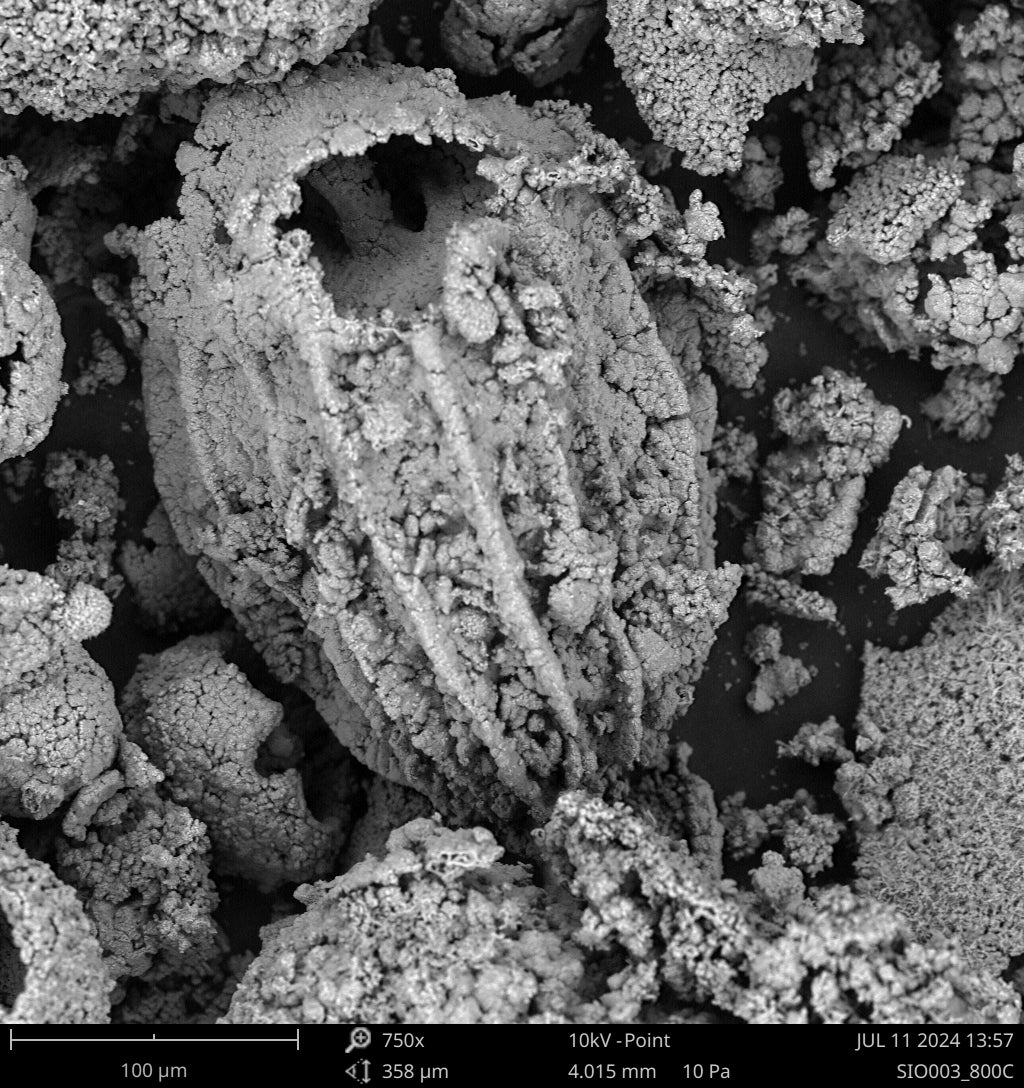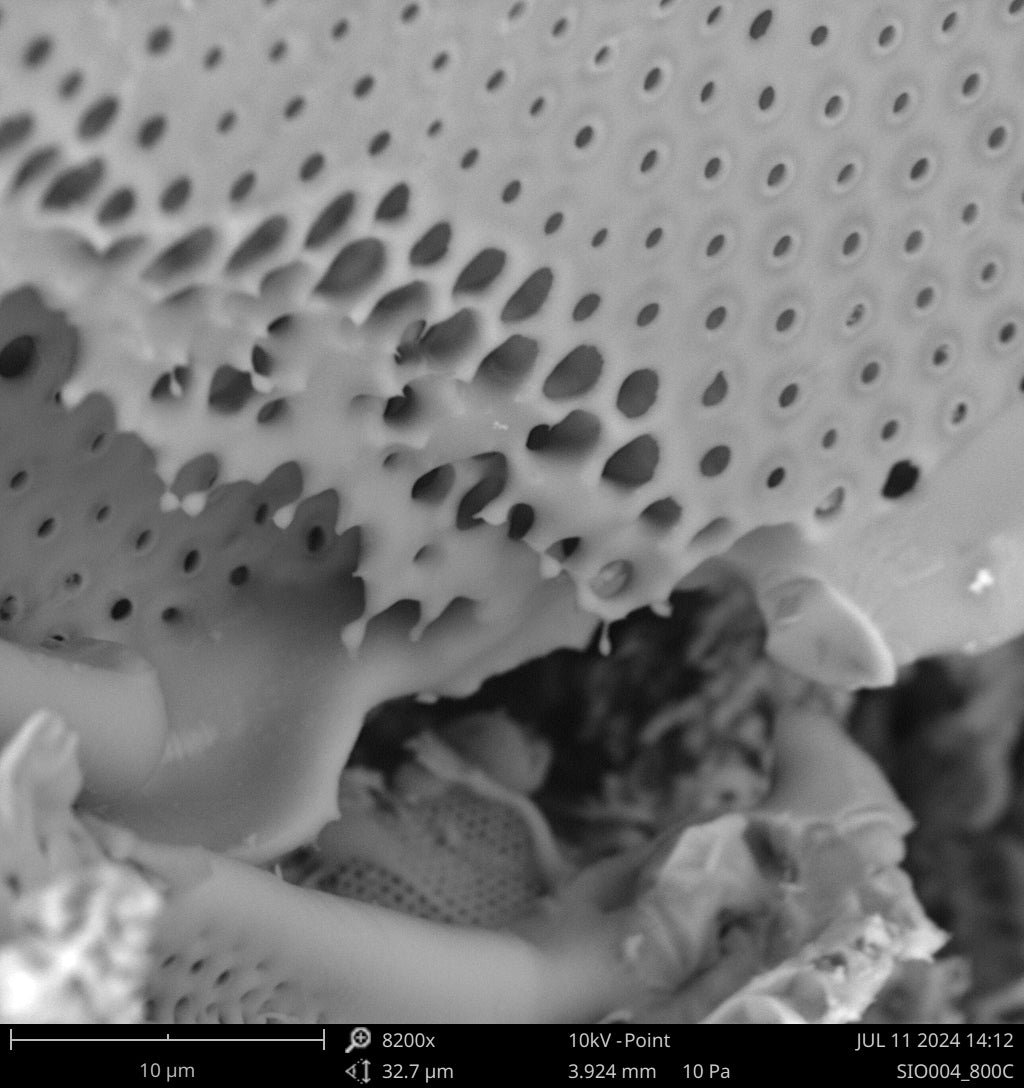Images of nanofossils within the marine sediments, fired at increasing temperatures captured via SEM (scanning electron microscope)
- Read more about the Scripps Geological Collections Facility's work with nanofossils at https://scripps.ucsd.edu/geological-collections/
Olla Ceramics Data Collection sheet, displaying 8 sediments provided by Scripps Oceanography Institute. '23
Porcelain ikebana vase brushed with pteropod dust (Scp_003, left) and fired to 1200C.
Testing of marine sediments as surface decoration on porcelain. Firing from 600C to 1200C.
A sea angel (pteropod) swimming in the dark waters of Antartica. Image Credit: Cold Water Science
Elemental composition of the marine sediments scanned by Scripps Institute's XRF (x-ray fluorescence machine).
Cyanotype on Porcelain
In collaboration with Marine Scientist and Photographer, Oriana Poindexter.
The process: "The cyanotype is a slow-reacting, economical photographic printing formulation sensitive to a limited near ultraviolet and blue light spectrum, the range 300 nm to 400 nm known as UVA radiation."
The experiment: Customarily done on textiles and paper, we set out to branch into 3 dimensions, harnessing the spherical nature of turned porcelain. Testing multiple clay bodies, to multiple temperatures and exposure times, Oriana Poindexter and I created a collection of vases that advocate for the ocean in which we neighbor. Portraying the delicate beauty of San Diego's precious marine ecology and harnessing the shifting angles of the sun.
Surfgrass exposure on porcelain moon jar in Bird Rock, Ca. Vase featured in "Kelp Cult" 2025 calendar. @opoindex
Allowing the spring sun to expose the image of our foraged giant kelp onto a small porcelain vase which has already been fired to vitrification (1200C) and the surface left raw.
Testing cyanotype solution on a stoneware plate coated with beach sand. Sharper images were achieved later on porcelain vs. stoneware comparatively.
Coral cyanotype. Color altered by the addition of a third firing to 1050C, post exposure.
Pieces available for purchase at https://www.orianapoindexter.com/
Pieces available for purchase at https://www.orianapoindexter.com/
Contaminated Soils
By safely collecting soils that have been contaminated due to urban influence, we can create visual narrations of industrial pollution, inspiring community action and environmental stewardship.
The Contaminated Soils series mirrors the resilience and perseverance of nature with one-of-a-kind vessels that repurpose pollutants as a means to celebrate and advocate for these vulnerable biospheres.
Series and samples are currently on display at the Rhode Island School of Design Material Library. (see Press)
Right: Sulfite ridden soil painted on porcelain, collected from Aliso Creek in Laguna Beach, Ca. A popular skim boarding area, lesser known for its high toxicity.
Photographed at Casa Laguna Hotel and Spa.
Contaminated sediment collected at the mouth of Aliso Creek, downstream of The Ranch at Laguna Beach Golf Course.
Porcelain moon jar dipped in contaminated sediment, Fired to 1200C in a contained, filtered environment, burning off bacteria and phosphorus present upon collection.
“The contaminated urban runoff plume migrates up and down the surf zone to threaten the health of unsuspecting families and beach visitors enjoying the waves."
(J.Amodeo, 2021)
World Pigment Canvases
Iron rich earthenware from the artists home functions as the structural foundation and canvas for natural materials hand-collected and donated to the studio from around the globe.
Left: Pigment Canvas III. Base form constructed from San Diego Earthenware from the valley the artist grew up, painted with sediments from Santa Cruz, Laguna Beach, Anza Borrego Desert in California, as well as clays from Nigeria, Israel, Serbia and the floor of the Pacific Ocean.
Official selection in the 1000Vases Paris 2024 Show.
Foraged Marine Materials
Traditional ash glazes made from decaying kelp, sea grass, and ground oyster shells sourced from sustainable seafood restaurants in San Diego, Ca.
Rinsing feather boa kelp to remove excess salt and microbial slime before processing into ash.
Completed moon vase with red Deep Ocean clay and kelp ash, in the cove which the kelp was collected.
Beached giant kelp, washed up in the winter tides. La Jolla, California.
Deep Ocean red clay, ash coated live kelp and kelp ash glaze painted onto porcelain jar.
A local picking at the kelp ash glaze, La Jolla, Ca



